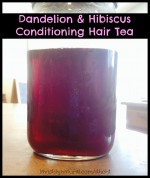Dirty & Clean Resources
These lists seem to change in some way each year. For the most part, cucumbers, spinach and sometimes kale are typically on the dirty list. Which means they’ve been sprayed heavily with pesticides. Before juicing and eating your goodies, always make sure to soak or wash them well.
Here is the 2014 “Dirty Dozen” in order from most to least pesticide-ridden:
- Apples
- Strawberries
- Grapes
- Celery
- Peaches
- Spinach
- Sweet Bell Peppers
- Nectarines (imported)
- Cucumbers
- Cherry Tomatoes (up 2 spots from last year)
- Snap Peas (imported)
- Potatoes
Also high in pesticides but didn’t make the list…
- Hot Peppers*
- Kale/Collard Greens*
*Crops that don’t meet the traditional Dirty Dozen standards but are found to be frequently contaminated with toxic pesticides.
Here’s a full list of the Dirty Dozen & Clean Fifteen from PBS.org
The Dirty:
- celery
- peaches
- strawberries
- apples
- domestic blueberries
- nectarines
- sweet bell peppers
- spinach, kale and collard greens
- cherries
- potatoes
- grapes
- lettuce
The Clean:
-
onions
-
avocados
-
sweet corn
-
pineapples
-
mango
-
sweet peas
-
asparagus
-
kiwi fruit
-
cabbage
-
eggplant
-
cantaloupe
-
watermelon
-
grapefruit
-
sweet potatoes
-
sweet onion
For some cool photos of these beauties, scroll to the bottom on the Environmental Working Group’s site.
*World’s Healthiest Foods has a beautiful breakdown of all the vitamins and minerals in most of your favorite veggies. Note: kale and spinach are cooked in their nutrient list…you get more essential nutrients vitamins in this raw refreshment that enters your system within 15 minutes of sipping.
**Wash or briefly soak your greens in water before juicing. Spinach, cucumbers and sometimes kale are each on the list of the dirty dozen so buy organic when you can…and give them a nice, deep bath in your sink.




